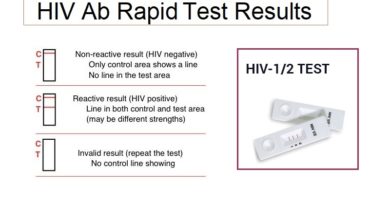Gonorrhea infection, basic facts – Update as of 2025
Basic Gonorrhea Facts
Gonorrhea infection Facts include:
STDs refer to more than 35 infectious organisms that are transmitted primarily through sexual activity.
Gonorrhea is a very common infection
Gonorrhea can infect both men and women – Mainly young people (15-24 years)
It is a sexually transmitted disease (STDs)
Caused by bacteria (N.Gonorrhoeae)
Prevention of Gonorrhea
Diagnosis of Gonorrhea infection
– By symptoms – It affects genitals, rectum, and throat
– By laboratory tests
Treatment of Gonorrhea
There is a recent update for 2025: Please follow up later!
Gonorrhea infection is a very common – Global prevalence
About 87 million new gonococcal infections occurred among 15–49 year old in 2016, as per the World Health Organization (WHO). Gonorrhea rates are rising in many countries. Men who have sex with men, and sex workers appear to the most commonly infected groups with gonorrhea. in 2019 , Gonorrhea increased 5 percent to more than 580,000 cases, it was also the highest number reported since 1991.
Gonorrhea can infect both men and women
N. gonorrhoeae is easily transmitted. The most risky is anal sex , followed by vaginal , then oral sex.
| Rate of spread | |
| Anal Sex ( most risky) | – 84% urethral-to-rectal per act – 2% rectal-to-urethral per act |
| Vaginal Sex | – penile-to-vaginal transmission is about 50% per act – vaginal-to-penile transmission is about 20% per act |
| Oral | – 63% urethral-to-pharyngeal – 9% pharyngeal-to-urethral |
Gonorrhea is It is sexually transmitted
1
Mainly by Sex
You can be infected with gonorrhea by sexual intercourse of any type: vaginal, anal, or oral sex
2
An infected pregnant woman, can transmit gonorrhea to her baby during childbirth
Caused by N. Gonorrhea bacteria
Neisseria gonorrhoeae or gonococcus is a Gram-negative (looks pink with gram stain), aerobic (need oxygen to survive), nutritionally fastidious, bacterium, with diplococcal arrangement under the microscope. It is transmitted by sexual intercourse to humans, (humans is the only natural hosts for gonococcus).
Prevention of Gonorrhea
How can you reduce the risk of getting gonorrhea?
The only way to avoid STDs is to not have sex of any type
vaginal, anal, or oral sex.
Or
If you are sexually active, then
One sex partner
Using latex condoms the right way every time
If not
You are at risk for gonorrhea infection
Pregnant woman
Pregnant and have gonorrhea, you can give it to your baby during delivery.
Serious health problems for your baby.
You get treatment. Treating gonorrhea as soon as possible will protect your baby.
Diagnosis of Gonorrhea infection
By symptoms
Gonorrhea symptoms in men
Some men infected with gonorrhea, but may have no symptoms at all.
Men who do have symptoms, may have:
A burning sensation when urinating;
A white, yellow, or green discharge from the penis;
Painful or swollen testicles (although this is less common).
Gonorrhea symptoms in women
Most women with gonorrhea do not have any symptoms. Even when a woman has symptoms, they are often mild and can be mistaken for a bladder or vaginal infection. Women with gonorrhea are at risk of developing serious complications from the infection, even if they don’t have any symptoms.
Symptoms in women can include:
Painful or burning sensation when urinating;
Increased vaginal discharge;
Vaginal bleeding between periods.
Rectal infection in men and women
Rectal infections may either cause no symptoms or cause symptoms in both men and women that may include Discharge; Anal itching; Soreness; Bleeding; Painful bowel movements.
By laboratory Tests
1- Gram staining method (the old routinely used method for diagnosis), but in this case sensitivity does not reach 50% for men with asymptomatic urethritis, or from cervical or rectal samples.
2- The isolation of N. gonorrhoeae by culture is the standard laboratory test for diagnosis.
3- Nucleic acid amplification techniques (recently introduced), based on PCR are faster, similar sensitivity to culture, but with greater specificity.
Treatment of Gonorrhea
N. gonorrhoeae has the ability to develop antimicrobial resistance, that is why, Its treatment complicated. Currently a combination therapy of two antimicrobial agents with different mechanisms of action (eg, ceftriaxone and azithromycin) is recommended to enhance treatment effectiveness, as per CDC.
Sources:
– https://www.ncbi.nlm.nih.gov/pmc/articles/PMC7064409/
– https://www.healthypeople.gov/2020/topics-objectives/topic/sexually-transmitted-diseases
– https://www.cdc.gov/nchhstp/newsroom/2019/2018-STD-surveillance-report-press-release.html
– https://www.cdc.gov/std/gonorrhea/arg/default.htm
– https://en.vircell.com/diseases/40-neisseria-gonorrhoeae/
💬 Chat with Us:
You can easily reach Helal Medical via WhatsApp (+63 966 974 1609), Facebook Messenger, or by clicking the chat icon at the lower right corner of our website HelalMedical.com.
Read More:
The Treatment of Gonorrhea: Facing the Challenge of Antibiotic Resistance




